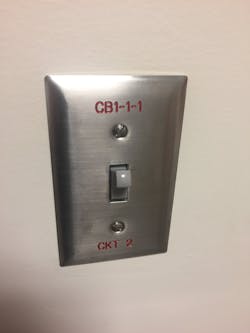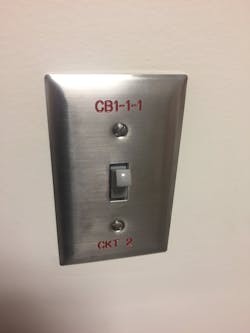Practically Speaking: Exploring the Particulars of Patient Care Spaces
Wiring serving patient care spaces of health care facilities must comply with the requirements of Sec. 517.13(A) and (B). Section 517.13(A) requires branch circuits to be installed in a metal raceway system or a cable having a metallic armor or sheath assembly. The metal raceway system, metallic cable armor, or sheath assembly must qualify as an equipment grounding conductor (EGC) as specified in Sec. 250.118. Additionally, Sec. 517.13(B) requires certain items to be connected to an insulated EGC installed within the wiring methods specified in Sec. 517.13(A). The items required to be connected to this insulated EGC include the grounding terminals of receptacles other than isolated ground receptacles, metal outlet boxes, metal device boxes, metal enclosures, and any other non-current-carrying conductive surfaces of fixed electrical equipment operating at more than 100V and likely to become energized that are subject to personal contact.
Does this include metal device plates too? Yes, it does. However, Exception No. 2 allows metal faceplates to be connected to an effective ground-fault current path using metal mounting screws securing the faceplate to a metal yoke or strap of a receptacle or to a metal outlet box. What about a metal switch plate like the stainless-steel switch plate in the Photo? Exception No. 2 does not apply to metal switch plates secured to a metal device yoke or strap. The literal wording in Sec. 517.13(B)(1)(3) requires the metal faceplate for a switch to be connected to an insulated copper EGC unless the switch plate is secured directly to a metal outlet box. I’m not sure that is the intent though. Thankfully NFPA 99, Healthcare Facilities Code clarifies this conundrum.
Section 6.3.2.5.1.4(B)(4) of the 2021 and 2024 editions allow metal faceplates to be connected to the EGC using a metal mounting screw(s) securing the faceplate to a grounded outlet box or grounded wiring device. This applies to switch plates as well as receptacle plates. Which code takes precedence in this case? Well, since NFPA 99 applies specifically to health care facilities, while the NEC applies generally to all types of occupancies, NFPA 99 should be followed for installations in healthcare facilities. In a bit of a twist, neither the NEC nor NFPA 99 requires metal device boxes or metal outlet boxes to be used with the metal raceways or metal cables required in the patient care spaces. Perhaps that will get clarified in future editions of the NEC or NFPA 99.
About the Author

Russ LeBlanc
Owner
Russ started in the electrical trade as an apprentice in 1985. He worked his way up to become a Journeyman Electrician and then eventually became a Master Electrician and Licensed Construction Supervisor. In 1999 Russ become an Electrical Instructor for The Peterson School of Engineering in Massachusetts where he developed his passion for teaching, and quickly became Department Head of Electrical Instruction. Russ has taught thousands of apprentices, electricians, engineers, inspectors, and other electrical professionals during his career as an instructor. He continues to provide electrical professionals with Electrical Code seminars, Arc-Flash Awareness training seminars and educational material through his LeBlanc Consulting Services in North Reading, MA whose specialty is educating electricians. He has been an active member of the NFPA Electrical Section and has authored hundreds of National Electrical Code proposals and comments which have become Code rules to improve the safety for the electrical industry. Russ is also an IAEI certified Electrical Inspector.
Please visit www.russleblanc.net for more information.

